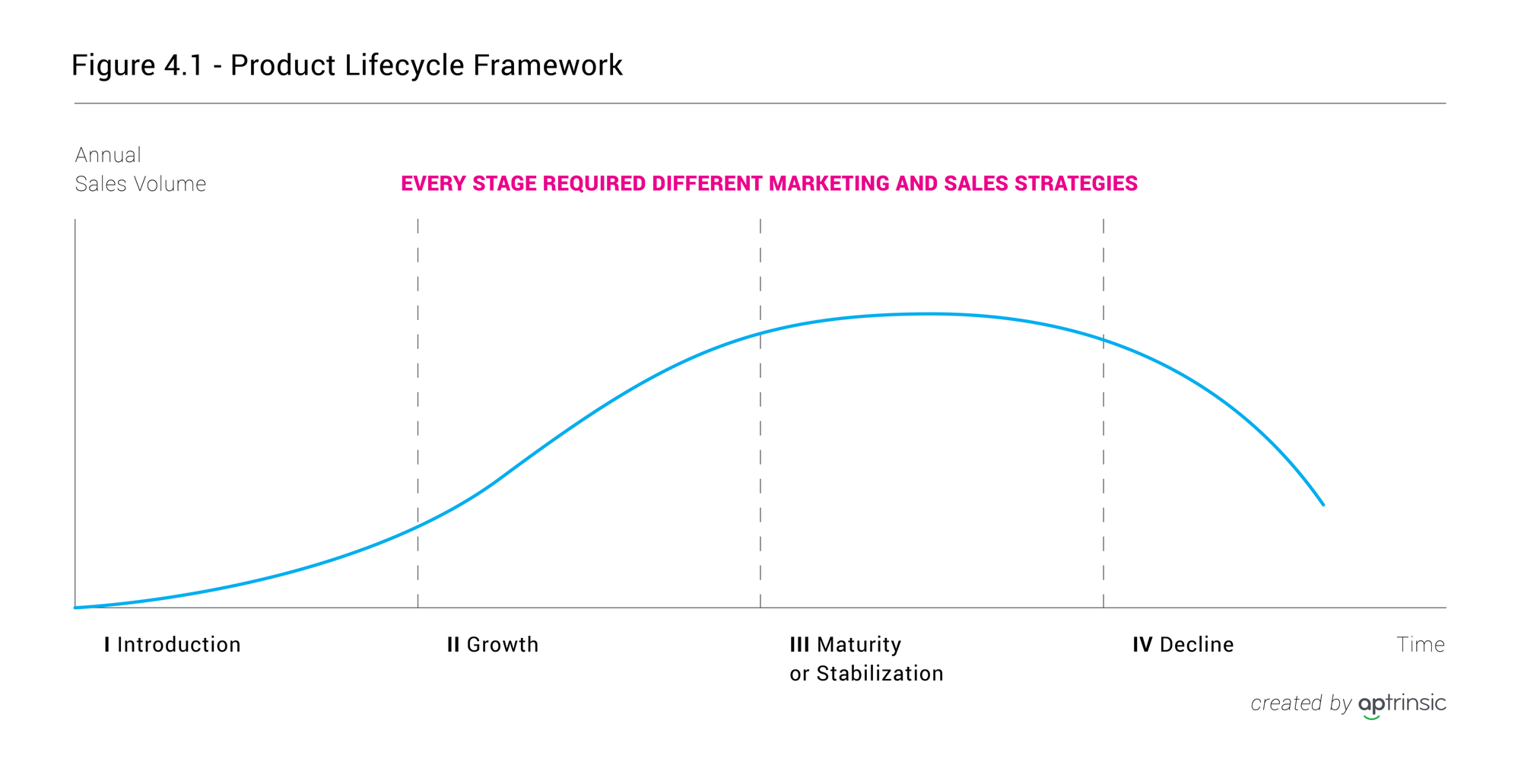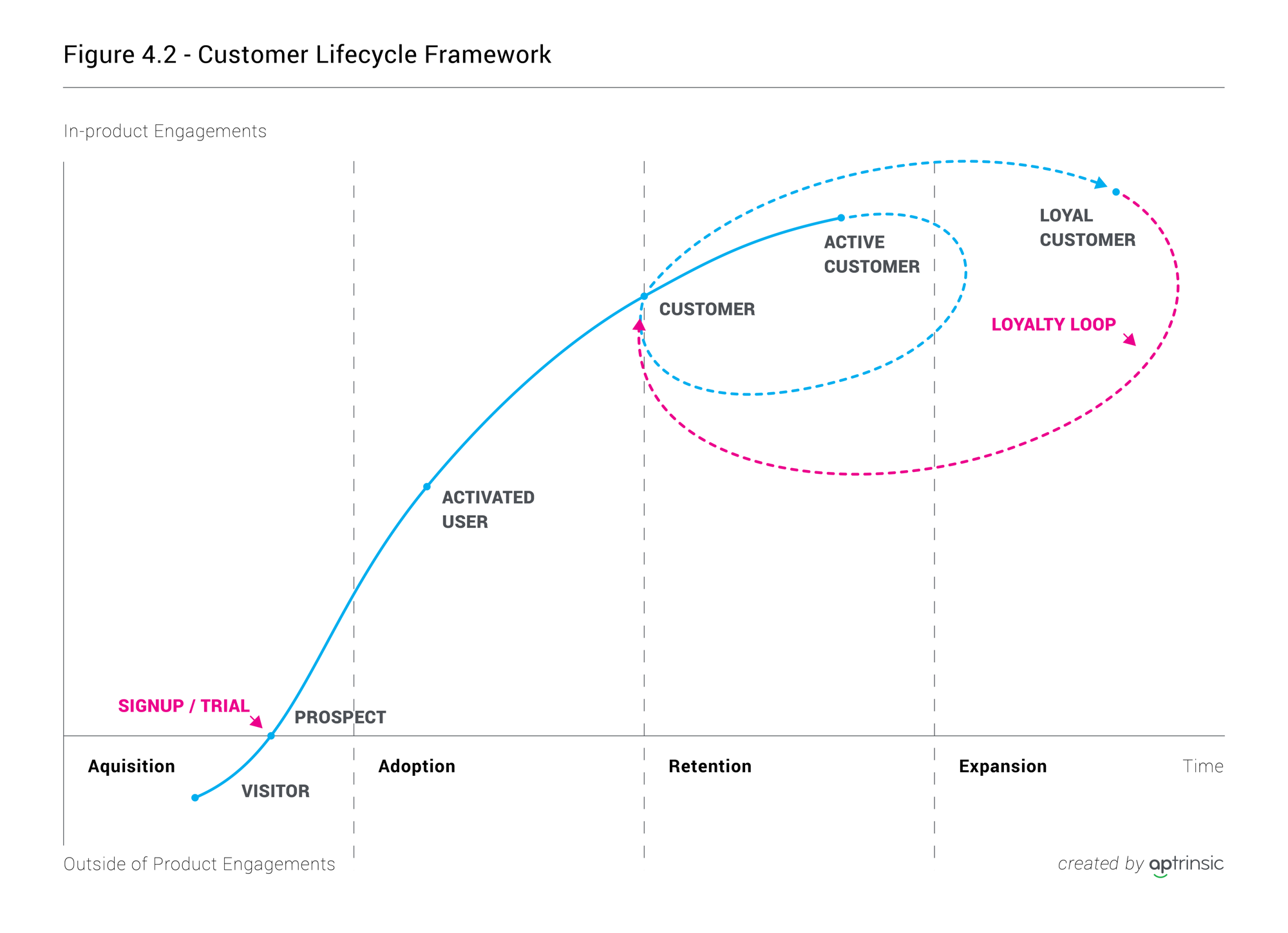

In the beginning of the software revolution, and the early days of SaaS, the software development models resembled processes of the past century. These processes were based on concrete and easily understood requirements and assembly lines, as in the automobile industry. Agile methodologies in the early 2000s changed how companies design and deliver software products in two important ways.
First, agile methodologies emphasized shorter development cycles to minimize risk and ensure a shorter feedback loop from customers. Efficient cycles enabled companies to build software products more cost-effectively, while also letting customers experience and provide feedback about the product. This is in stark contrast to designing software that took months, or even years, to reach customers.
Second, agile shifted the focus from the product lifecycle to the customer lifecycle as the primary GTM strategy. This is a better way to understand customers’ needs and communicate value through marketing and sales activities.
In much the same way, SaaS companies that are serious about customer experience will have to rethink how they look at the company-customer relationship. It’s easier for companies to design sales processes, rather than put themselves in their customers’ shoes. It may sound banal, but analyzing the buying process can profoundly affect an organization.
Think of this in the context of a shoe store. A store manager might create a policy to greet every customer who walks in, and tell them about a new golf shoe collection. But how effective would this policy be with a returning customer who bought four or five Asics Tigers in the last few years? While a simple consumer example, this helps illustrate how the way that customers buy can be quite different, and disconnected from how companies sell.
The SaaS revolution and the introduction of agile methodologies removed the need for companies to use product lifecycle as the way to market their product; but sales-driven thinking about customer journeys manifested in the new strategy of creating marketing and sales funnels. You probably can find a thousand different variations of a SaaS sales funnel, but most focus on the company’s sales process, not the customer’s buying journey.
In the past decade at least, there has been much talk about companies becoming customer-first and customer-centric; yet many enterprise software companies that call themselves customer-centric are failing at the first step of providing better customer experience. They fail to understand how customers buy, because they still focus on how they ought to be sold.
Product lifecycle is a framework that helps a company organize its marketing and sales of a product, from introducing it to the market to when sales peak and decline.

Figure 4.1 — Product Lifecycle Framework
Figure 4.1 shows a classic product lifecycle diagram where each stage corresponds to specific sales and marketing strategies, programs, and campaigns.
It was helpful to see selling and marketing through the prism of the product lifecycle in the on-premise software era. At that time, it was more complicated and costly for companies to release updates, because often, new releases were treated as a new version of the product requiring a new physical installation of software. Just picture an early version of Windows that had to be updated using a CD, or even a floppy drive.
With SaaS, the product lifecycle concept became obsolete. Today, companies make incremental improvements and release product updates in the cloud on a weekly, daily, and sometimes even hourly basis. For example, Amazon releases new software every 11.6 seconds! This became possible thanks to a new set of technologies called “continuous deployment”.
Quick deployments of new software updates and features increase the speed at which companies receive customer feedback. A customer lifecycle framework puts customers at the center of virtually everything a company focuses on, to successfully operate and sustain revenue growth. The customer experience becomes an essential part of driving an effective customer engagement and GTM strategy that helps move prospective customers from one lifecycle stage to the next.
What Is the Customer Lifecycle?
Customer lifecycle is a framework that describes the process a customer goes through when considering, buying, using, and advocating use of a product or service.
Companies that understand how their customers progress through the lifecycle can not only better evaluate customer experiences at different points, they can also uncover critical steps where customers get stuck. For instance, perhaps prospective customers tend to abandon a trial upon hitting a certain step in a task they are trying to complete. By noticing this pattern, the company could investigate to determine the problem with the step, and then take measures to remedy the situation.
Furthermore, unlike a product lifecycle or marketing/sales funnel, a customer lifecycle is a continuous process of retaining, expanding, and creating loyal customers (as shown in Figure 4.2). Unfortunately, the shoe store analogy only takes us so far. But it would be nice if you could buy a pair of shoes and then upgrade their color while you were wearing them (perhaps, one day, a startup will solve even this). For all companies, it is much more profitable to keep a customer than to acquire a new one. The beauty for SaaS companies is that the SaaS business model, combined with a new approach to customer acquisition, makes it easier to retain customers.
